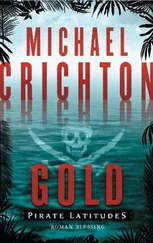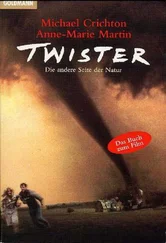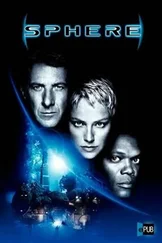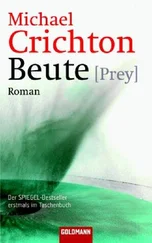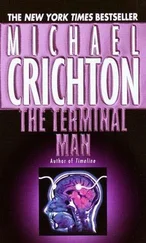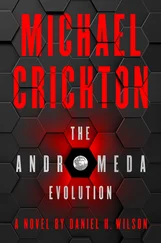Michael Crichton - Jurassic Park
Здесь есть возможность читать онлайн «Michael Crichton - Jurassic Park» весь текст электронной книги совершенно бесплатно (целиком полную версию без сокращений). В некоторых случаях можно слушать аудио, скачать через торрент в формате fb2 и присутствует краткое содержание. Жанр: Детская проза, на английском языке. Описание произведения, (предисловие) а так же отзывы посетителей доступны на портале библиотеки ЛибКат.
- Название:Jurassic Park
- Автор:
- Жанр:
- Год:неизвестен
- ISBN:нет данных
- Рейтинг книги:4 / 5. Голосов: 2
-
Избранное:Добавить в избранное
- Отзывы:
-
Ваша оценка:
- 80
- 1
- 2
- 3
- 4
- 5
Jurassic Park: краткое содержание, описание и аннотация
Предлагаем к чтению аннотацию, описание, краткое содержание или предисловие (зависит от того, что написал сам автор книги «Jurassic Park»). Если вы не нашли необходимую информацию о книге — напишите в комментариях, мы постараемся отыскать её.
Jurassic Park — читать онлайн бесплатно полную книгу (весь текст) целиком
Ниже представлен текст книги, разбитый по страницам. Система сохранения места последней прочитанной страницы, позволяет с удобством читать онлайн бесплатно книгу «Jurassic Park», без необходимости каждый раз заново искать на чём Вы остановились. Поставьте закладку, и сможете в любой момент перейти на страницу, на которой закончили чтение.
Интервал:
Закладка:
Dennis Nedry yawned. He'd long ago concluded that InGen must be doing something like this. A couple of years earlier, when InGen had hired Nedry to design the park control systems, one of the initial design parameters called for data records with 3 X 109 fields. Nedry just assumed that was a mistake, and had called Palo Alto to verify it. But they had told him the Spec was correct. Three billion fields.
Nedry had worked on a lot of large systems. He'd made a name for himself setting up worldwide telephone communications for multinational corporations. Often those systems had millions of records. He was used to that. But InGen wanted something so much larger…
Puzzled, Nedry had gone to see Barney Fellows over at Symbolics, near the M.I.T. campus in Cambridge. "What kind of a database has three billion records, Barney?"
"A mistake," Barney said, laughing. "They put in an extra zero or two."
"It's not a mistake. I checked. It's what they want."
"But that's crazy," Barney said. "It's not workable. Even if you had the fastest processors and blindingly fast algorithms, a search would still take days. Maybe weeks."
"Yeah," Nedry said. "I know. Fortunately I'm not being asked to do algorithms. I'm just being asked to reserve storage and memory for the overall system. But still… what could the database be for?"
Barney frowned. "You operating under an ND?"
"Yes," Nedry said. Most of his jobs required nondisclosure agreements.
"Can you tell me anything?"
"It's a bioengineering firm."
"Bioengineering," Barney said. "Well, there's the obvious…"
"Which is?"
"A DNA molecule."
"Oh, come on," Nedry said. "Nobody could be analyzing a DNA molecule." He knew biologists were talking about the Human Genome Project, to analyze a complete human DNA strand. But that would take ten years of coordinated effort, involving laboratories around the world. It was an enormous undertaking, as big as the Manhattan Project, which made the atomic bomb. "This is a private company," Nedry said.
"With three billion records," Barney said. "I don't know what else it could be. Maybe they're being optimistic designing their system."
"Very optimistic," Nedry said.
"Or maybe they're just analyzing DNA fragments, but they've got RAM-intensive algorithms."
That made more sense. Certain database search techniques ate up a lot of memory.
"You know who did their algorithms?"
"No," Nedry said. "This company is very secretive."
"Well, my guess is they're doing something with DNA," Barney said. "What's the system?"
"Multi-XMP."
"Multi-XMP? You mean more than one Cray? Wow." Barney was frowning, now, thinking that one over. "Can you tell me anything else?"
"Sorry," Nedry said. "I can't." And he had gone back and designed the control systems. It had taken him and his programming team more than a year, and it was especially difficult because the company wouldn't ever tell him what the subsystems were for. The instructions were simply "Design a module for record keeping" or "Design a module for visual display." They gave him design parameters, but no details about use. He had been working in the dark. And now that the system was up and running, he wasn't surprised to learn there were bugs. What did they expect? And they'd ordered him down here in a panic, all hot and bothered about "his" bugs. It was annoying, Nedry thought.
Nedry turned back to the group as Grant asked, "And once the computer has analyzed the DNA, how do you know what animal it encodes?"
"We have two procedures," Wu said. "The first is phylogenetic mapping. DNA evolves over time, like everything else in an organism-hands or feet or any other physical attribute. So we can take an unknown piece of DNA and determine roughly, by computer, where it fits in the evolutionary sequence. It's time-consuming, but it can be done."
"And the other way?"
Wu shrugged. "Just grow it and find out what it is," he said. "That's what we usually do. I'll show you how that's accomplished."
Tim felt a growing impatience as the tour continued. He liked technical things, but, even so, he was losing interest. They came to the next door, which was marked FERTLIZATION, Dr. Wu unlocked the door with his security card, and they went inside.
Tim saw still another room with technicians working at microscopes. In the back was a section entirely lit by blue ultraviolet light. Dr. Wu explained that their DNA work required the interruption of cellular mitosis at precise instants, and therefore they kept some of the most virulent poisons in the world, "Helotoxins, colchicinolds, beta-alkaloids," he said, pointing to a series of syringes set out under the UV light. "Kill any living animal within a second or two."
Tim would have liked to know more about the poisons, but Dr. Wu droned on about using unfertilized crocodile ova and replacing the DNA; and then Professor Grant asked some complicated questions. To one side of the room were big tanks marked LIQUID N2. And there were big walk-in freezers with shelves of frozen embryos, each stored in a tiny silver-foil wrapper.
Lex was bored. Nedry was yawning. And even Dr. Sattler was losing interest. Tim was tired of looking at these complicated laboratories. He wanted to see the dinosaurs.
The next room was labeled HATCHERY. "It's a little warm and damp in here," Dr. Wu said. "We keep it at ninety-nine degrees Fahrenheit and a relative humidity of one hundred percent. We also run a higher O2 concentration. It's up to thirty-three percent."
"Jurassic atmosphere," Grant said.
"Yes. At least we presume so. If any of you feel faint, just tell me."
Dr. Wu inserted his security card into the slot, and the outer door hissed open. "Just a reminder: don't touch anything in this room. Some of the eggs are permeable to skin oils. And watch your heads. The sensors are always moving."
He opened the inner door to the nursery, and they went inside. Tim faced a vast open room, bathed in deep infrared light. The eggs lay on long tables, their pale outlines obscured by the hissing low mist that covered the tables. The eggs were all moving gently, rocking.
"Reptile eggs contain large amounts of yolk but no water at all. The embryos must extract water from the surrounding environment. Hence the mist,"
Dr. Wu explained that each table contained 150 eggs, and represented a new batch of DNA extractions. The batches were identified by numbers at each table: STEC-458/2 or TRIC-390/4. Waist-deep in the mist, the workers in the nursery moved from one egg to the next, plunging their hands into the mist, turning the eggs every hour, and checking the temperatures with thermal sensors. The room was monitored by overhead TV cameras and motion sensors. An overhead thermal sensor moved from one egg to the next, touching each with a flexible wand, beeping, then going on.
"In this hatchery, we have produced more than a dozen crops of extractions, giving us a total of two hundred thirty-eight live animals. Our survival rate is somewhere around point four percent, and we naturally want to improve that. But by computer analysis we're working with something like five hundred variables: one hundred and twenty environmental, another two hundred intra-egg, and the rest from the genetic material itself. Our eggs are plastic. The embryos are mechanically inserted, and then hatched here."
"And how long to grow?"
"Dinosaurs mature rapidly, attaining full size in two to four years. So we now have a number of adult specimens in the park."
"What do the numbers mean?"
"Those codes," Wu said, "identify the various batch extractions of DNA. The first four letters identify the animals being grown. Over there, that TRIC means Triceratops. And the STEC means Stegosaurus, and so on.
"And this table here?" Grant said.
Читать дальшеИнтервал:
Закладка:
Похожие книги на «Jurassic Park»
Представляем Вашему вниманию похожие книги на «Jurassic Park» списком для выбора. Мы отобрали схожую по названию и смыслу литературу в надежде предоставить читателям больше вариантов отыскать новые, интересные, ещё непрочитанные произведения.
Обсуждение, отзывы о книге «Jurassic Park» и просто собственные мнения читателей. Оставьте ваши комментарии, напишите, что Вы думаете о произведении, его смысле или главных героях. Укажите что конкретно понравилось, а что нет, и почему Вы так считаете.


